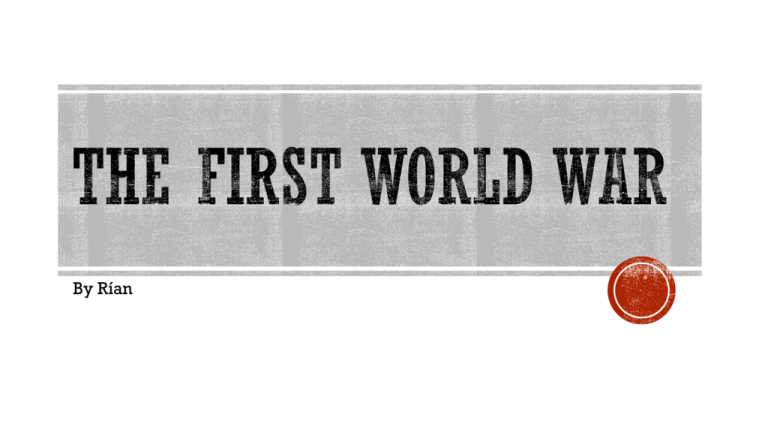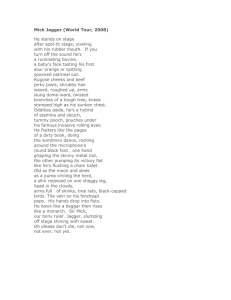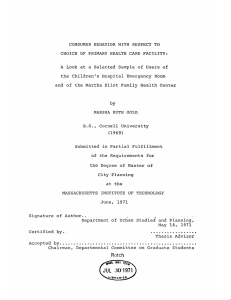The first world war
advertisement

By Rían What started out as a local European war soon became a global war that lasted from 1914-1918. World War I was the first war that involved nations (28 to be exact) from around the world, and is commonly called The Great War or The War to End All Wars. On June 28, 1914, a Serbian nationalist named Gavrilo Princip assassinated Franz Ferdinand the Archduke of Austria, in Sarajevo. Exactly one month later, Austria-Hungary declared war on Serbia. The war divided Europe into two armed camps - on one side was the Triple Alliance made up of Germany, Austria-Hungary and Italy, and their enemy was the Triple Entente of France, Russia and Great Britain. As other countries began to join sides, the Triple Alliance became known as the Central Powers and the Triple Entente became the Allied Forces. Most of the action took place in the trenches. They were dug deep into the ground in a zigzag pattern to protect soldiers from advancing enemies. Soldiers spent an average period of eight days in the trench, where they were constantly under threat of attack from shellfire, snipers and diseases. Soldiers experienced everything from ‘Trench Fever’ (a painful infection caused by lice) to ‘Trench Foot’, which caused a fungal foot infection that could result in amputation! The British and the French recruited manpower from neutral China to support the troops with manual labour. Their most important task was digging the trenches in WW1. 140,000 Chinese workers served on the Western Front over the course of the First World War (40,000 with the French and 100,000 with the British forces). They were known as the Chinese Labour Corps. WWI was different from previous wars because soldiers used more efficient weapons like machine guns, artillery, tanks and air force. Military operations began in three major areas in Europe - the western front (France/Belgium), the eastern front (Russia) and the southern front (Serbia).There were many deadly battles during World War One, including the battles of Ypres, Vimy Ridge, Somme and Gallipoli. Although thousands of soldiers died during these battles, they were all turning points for the Allied Forces in helping them win the first world war. On October 3, 1918, Germany requested a cease-fire. The war ended on the 11th hour of the 11th day of the 11th month, when the two sides signed the Armistice and agreed to stop fighting. Cher Ami after recovering from battle and with only one leg. Cher Ami was a homing pigeon that helped save nearly 200 American lives during World War I. During World War I, the U.S. 77th Infantry Division attacked the Germans near Charlevaux, France. Only one unit penetrated enemy lines: Major Charles White Whittlesay’s First Battalion of the 308th Infantry Regiment. The battalion was quickly surrounded by Germans – and then came under friendly fire from its own artillery. Whittlesay used his last carrier pigeon to send this three-sentence plea: “We are along the road parallel 276.4. Our artillery is dropping a barrage directly on us. For heavens sake stop it.“ Before Cher Ami, Whittlesay sent two other pigeons that didn’t make it in this hostile environment. The pigeon carrying the first message, “Many wounded. We cannot evacuate.” was shot down. A second bird was sent with the message, “Men are suffering. Can support be sent?” That pigeon also was shot down. Cher Ami was the last homing pigeon left. Cher Ami, which is French for “dear friend”, was a homing pigeon donated to the US Army Signal Corps by the British to deliver messages during the war. These flying messengers were often called War Pigeons. Cher Ami delivered his most important message on October 4th, 1918 The Battle of the Somme is an infamous battle in World War One that lasted from July 1st 1914 to the 18th of November 1914. Allied troops had nearly 600,000 casualties and the Germans had 650,000. On the first day, July 1st, General Haig’s offensive against German trenches saw 20,000 British troops die. Lots of these were from Ireland. The British Navy meanwhile wanted to attack and cut off the Ottoman empire. They decided to attack through narrow straits called the Dardanells and then land at Gallipoli. British ships were bombarded through the Dardanells from the Ottoman troops high up on the cliffs. Most of the British troops were in the ‘ANZAC’ forces. These came from Australia and New Zealand. Europe in 1914 Europe in 1924









